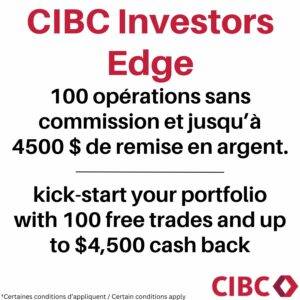Introduction
Are you looking to amplify your investment returns? 2x and 3x Leveraged Exchange-Traded Funds (ETFs) might be your ticket to potentially higher gains. This article delves into the mechanics, benefits, risks, and strategies associated with these powerful investment tools, guiding both US and Canadian investors through the complex world of leveraged ETFs.

What Are 2x and 3x Leveraged ETFs?
Leveraged ETFs are investment vehicles that use financial derivatives and debt to magnify the returns of an underlying index. A 2x leveraged ETF aims to double the daily performance of its index, while a 3x leveraged ETF strives to triple it. These ETFs reset daily, targeting short-term traders who wish to capitalize on daily market movements.
How Do Leveraged ETFs Work?
Using derivatives like futures, options, and swap agreements, leveraged ETFs amplify the daily return of an index. If the index rises by 1%, a 2x ETF aims to rise by 2%, and a 3x ETF by 3%. It’s crucial to note that this amplification applies daily, leading to potential compounding effects when held for more than one day.
The Appeal of Leveraged ETFs
Leveraged and inverse ETFs offer the potential for enhanced returns, attracting investors looking for significant gains in a short period. These ETFs use financial derivatives and debt to amplify the returns of an underlying index. While the promise of increased returns is alluring, it’s crucial to understand that these products are typically best suited for short-term strategies. They are particularly suited for traders who monitor daily market movements closely and have a solid grasp of the risks involved.
Market adaptability is another key advantage. Whether the market sentiment is bullish or bearish, leveraged and inverse ETFs provide tools that can adapt to various investment strategies. For bullish markets, leveraged ETFs aim to deliver multiples of the daily performance of the index they track. Conversely, in bearish markets, inverse ETFs seek to profit from a decline in the value of an underlying index.
However, it’s crucial for investors, especially those in the Canadian market, to approach these ETFs with caution. The risks associated with these products are significantly higher due to their complex nature and the potential for rapid losses. They are not typically recommended for long-term investment strategies due to their volatility and the impact of daily market fluctuations on their performance. Understanding these aspects is vital for anyone considering leveraged or inverse ETFs as part of their investment portfolio. As always, conducting thorough research and possibly consulting a financial professional are advisable steps before investing in these high-risk products.
Risks and Considerations
Volatility and the compounding effect are critical aspects to understand when considering leveraged ETFs. These funds aim to provide amplified returns of an underlying index, but this same mechanism greatly increases risk, especially in volatile markets. Volatility can significantly affect the performance of these ETFs due to the compounding effect. This means that daily returns are reinvested, and thus, gains or losses are magnified over time. In stable market conditions, this can lead to substantial growth, but during turbulent times, it can result in severe and rapid losses.
The daily reset feature is another crucial factor. Leveraged ETFs reset their leverage daily, meaning they aim to deliver the multiple of the index’s daily returns, not its long-term performance. This mechanism can cause the ETF’s performance to deviate substantially from the expected long-term returns of the underlying index, especially in volatile markets. This makes them unsuitable for long-term investments.
Lastly, higher fees are a notable downside. Leveraged ETFs often incur higher expense ratios compared to traditional ETFs. These fees can eat into potential returns, especially over longer periods. The combination of compounding effects, daily reset, and higher fees makes leveraged ETFs complex financial instruments that require a thorough understanding and cautious approach, particularly for investors in the Canadian market looking to manage risks effectively.

Strategies for Using 2x and 3x Leveraged ETFs
Leveraged ETFs are particularly designed for short-term trading due to their daily reset mechanism. They are adept at capitalizing on daily market movements, making them an attractive tool for traders who are closely monitoring market trends and looking to make quick, short-term gains. However, due to their complex structure and the risks associated with leverage, they require a deep understanding of market dynamics and timing.
These ETFs can also serve as hedging instruments. Investors may use them to protect against losses in other parts of their portfolio or to profit from market downturns. For instance, an inverse ETF might be used to hedge against market declines, effectively allowing investors to seek positive returns when their other investments are losing value. This can be a strategic way to manage risk, especially during times of market uncertainty.
Despite these potential advantages, it’s crucial to limit exposure to leveraged ETFs. Their high-risk nature, due to leverage and daily resetting, makes them unsuitable as a significant portion of a long-term investment portfolio. Wise investors often use them sparingly, as part of a diversified strategy, to manage and mitigate overall risk. This cautious approach helps in safeguarding the portfolio against the unpredictable swings often associated with these high-stake instruments. For Canadian investors, considering the proportion of investment in leveraged ETFs is crucial in maintaining a balanced and risk-mitigated portfolio.
Investing in Leveraged ETFs: A Guide
Before investing, consider the following:
Understand the Product: Ensure you fully grasp how leveraged ETFs work, including their daily reset and compounding effects.
Assess Risk Tolerance: They are suitable for investors comfortable with high risk and capable of closely monitoring their investments.
Consider Investment Horizon: Align your investment with your short-term market views and investment goals.
Seek Professional Advice: Especially if you’re new to leveraged ETFs, consulting with a financial professional can be invaluable.
Popular leveraged ETFs in US and Canada
When looking into leveraged ETFs, it’s important to consider offerings from various markets. In Canada and the United States, several providers offer 2x and 3x leveraged ETFs. Here are some examples from both countries:
United States
Direxion Daily S&P 500 Bull 3X Shares (SPXL): Aims to provide 3x the daily performance of the S&P 500 Index.
ProShares UltraPro QQQ (TQQQ): Seeks to deliver 3x the daily results of the NASDAQ-100 Index.
Direxion Daily Financial Bull 3X Shares (FAS): Targets 3x the daily performance of the Russell 1000 Financial Services Index.
ProShares Ultra S&P500 (SSO): Seeks to provide 2x the daily performance of the S&P 500.
Canada
Horizons BetaPro S&P/TSX 60 Bull Plus ETF (HXU): Aims to deliver 2x the daily performance of the S&P/TSX 60 Index.
Horizons BetaPro NASDAQ-100 Bull Plus ETF (HQU): Seeks to provide 2x the daily performance of the NASDAQ-100 Index.
BetaPro S&P 500 VIX Short-Term Futures™ 2x Daily Bull ETF (HVU): Offers 2x the daily performance of the S&P 500 VIX Short-Term Futures Index.
Horizons BetaPro S&P/TSX Capped Financials Bull Plus ETF (HFU): Targets 2x the daily performance of the S&P/TSX Capped Financials Index.
Conclusion
2x and 3x leveraged ETFs offer an exciting, albeit risky, opportunity for investors looking to amplify their returns on short-term market movements. They can significantly enhance gains but also come with the potential for amplified losses, especially in volatile markets. Understanding these instruments’ intricacies, their proper use cases, and your own risk tolerance is crucial before considering them as part of your investment strategy. Whether you’re in the US or Canada, these powerful tools require a combination of knowledge, vigilance, and strategic planning to navigate effectively. Remember, with great power comes great responsibility — handle with care and consideration.
I


